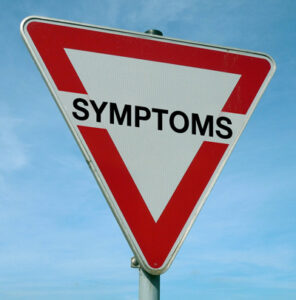
If your symptoms are persistent, then you must be too. Early-stage stomach cancer rarely causes symptoms, making early detection very difficult. Stomach cancer may or may not present with vague gastrointestinal symptoms, including indigestion, abdominal pain or discomfort, nausea, vomiting, bloating, or the feeling of fullness when eating a meal (also called early satiety). These symptoms can also be associated with other gastrointestinal illnesses, however, and should be discussed with a doctor who can perform tests to determine the cause of the symptoms.
Signs and Symptoms of Stomach Cancer can include:
- Indigestion, heartburn, or ulcer-type symptoms
- Difficulty swallowing
- Abdominal pain or vague discomfort in the abdomen, usually above the navel
- Nausea and vomiting and/or bloating after meals
- Vomiting blood, or blood in the stool
- Diarrhea or constipation
- Loss of appetite
- Unexplained weight loss
- Weakness and fatigue
- Sense of fullness after eating small amounts of food (also called early satiety)
- Symptoms may mimic other conditions, such as GERD, gastritis, or peptic ulcer
Signs and symptoms should not be ignored. Most of these symptoms may be caused by things other than stomach cancer. They may also occur with other types of cancer. People who have any of these symptoms, especially if they don’t go away or get worse, should see their doctor to determine the cause and be treated.
Diagnosis
Lab tests may be normal with stomach (gastric) cancer, or there may be signs of anemia (low red blood cells). The best way to diagnose stomach cancer is by taking a sample of stomach tissue (biopsy). To do this, a gastroenterologist uses a small camera called an endoscope to look inside the stomach and take biopsy samples. The samples are then sent to a pathologist, who can look at them under a microscope to determine if the cells are cancerous. Other tests that may be performed to look for cancer include endoscopic ultrasound, barium swallow, CT scan, MRI, or PET scan.
Gastric adenocarcinoma can be staged based on the TNM system. This system takes into account the extent of the primary tumor, lymph node involvement, metastasis, or spread of cancer to other parts of the body. The five stages range from Stage 0 to Stage IV based on each of the three categories, with stage IV being cancer that has spread to distant parts of the body.
About TNM Staging System
American Joint Committee on Cancer (AJCC)
Cancer Staging References
National Comprehensive Cancer Network (NCCN)
Cancer Staging Guide